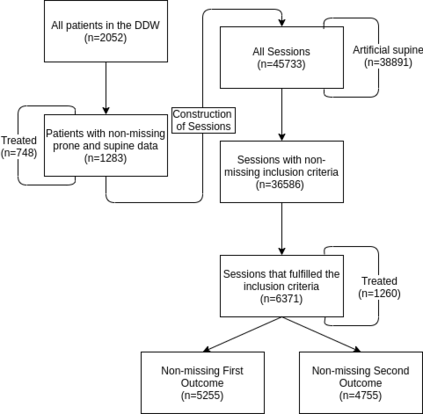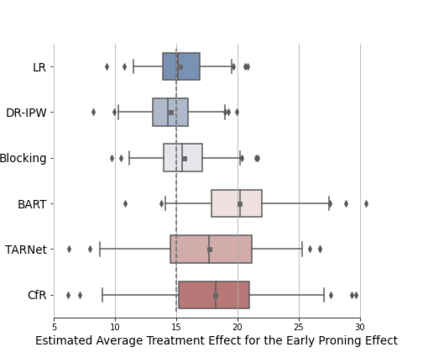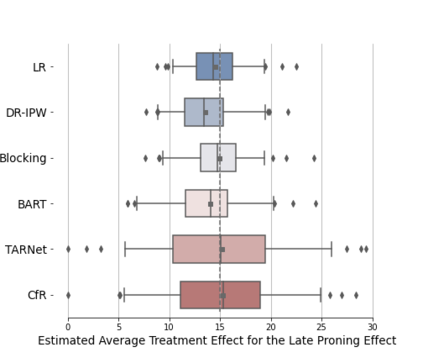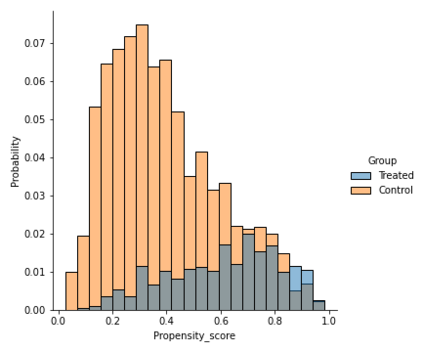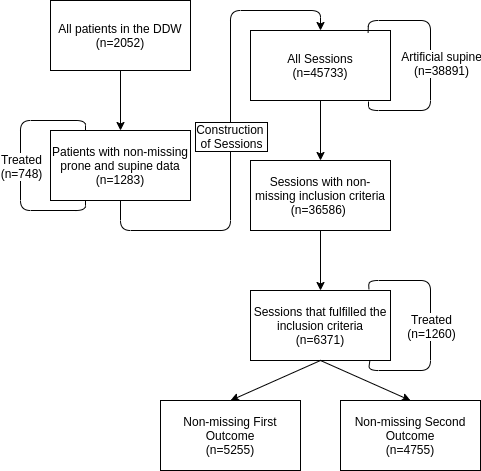Despite the recent progress in the field of causal inference, to date there is no agreed upon methodology to glean treatment effect estimation from observational data. The consequence on clinical practice is that, when lacking results from a randomized trial, medical personnel is left without guidance on what seems to be effective in a real-world scenario. This article showcases a pragmatic methodology to obtain preliminary estimation of treatment effect from observational studies. Our approach was tested on the estimation of treatment effect of the proning maneuver on oxygenation levels, on a cohort of COVID-19 Intensive Care patients. We modeled our study design on a recent RCT for proning (the PROSEVA trial). Linear regression, propensity score models such as blocking and DR-IPW, BART and two versions of Counterfactual Regression were employed to provide estimates on observational data comprising first wave COVID-19 ICU patient data from 25 Dutch hospitals. 6371 data points, from 745 mechanically ventilated patients, were included in the study. Estimates for the early effect of proning -- P/F ratio from 2 to 8 hours after proning -- ranged between 14.54 and 20.11 mm Hg depending on the model. Estimates for the late effect of proning -- oxygenation from 12 to 24 hours after proning -- ranged between 13.53 and 15.26 mm Hg. All confidence interval being strictly above zero indicated that the effect of proning on oxygenation for COVID-19 patient was positive and comparable in magnitude to the effect on non COVID-19 patients. These results provide further evidence on the effectiveness of proning on the treatment of COVID-19 patients. This study, along with the accompanying open-source code, provides a blueprint for treatment effect estimation in scenarios where RCT data is lacking. Funding: SIDN fund, CovidPredict consortium, Pacmed.
翻译:尽管最近在因果推断领域有所进展,但迄今为止,还没有商定从观察数据中收集治疗效果估计方法,因此,临床实践的后果是,当随机试验缺乏结果时,医务人员在现实情景中似乎有效与否方面缺乏指导。本文章展示了一种实用方法,以初步估计观察研究对治疗影响的初步估计。我们的方法是在估计推进操作对一组CVID-19-19患者的氧气水平、对一组CVID-19强化护理病人的治疗影响方面进行了测试。我们以最近的RCT预测模型(PROSVA试验)为研究设计了我们的研究设计。当缺乏随机试验结果时,临床实践做法的后果是:线性回归、阻塞和DR-IPW、BART和两个版本的反事实回归模型,以提供观察数据估计数,包括25个荷兰医院的COVID-19综合诊断结果。 6371个数据点,从745个机械开口化病人进一步治疗。 研究早期效果的估计数 -- -- P/F比率是2小时至18小时的RS-254和20毫米的氧基数据。

